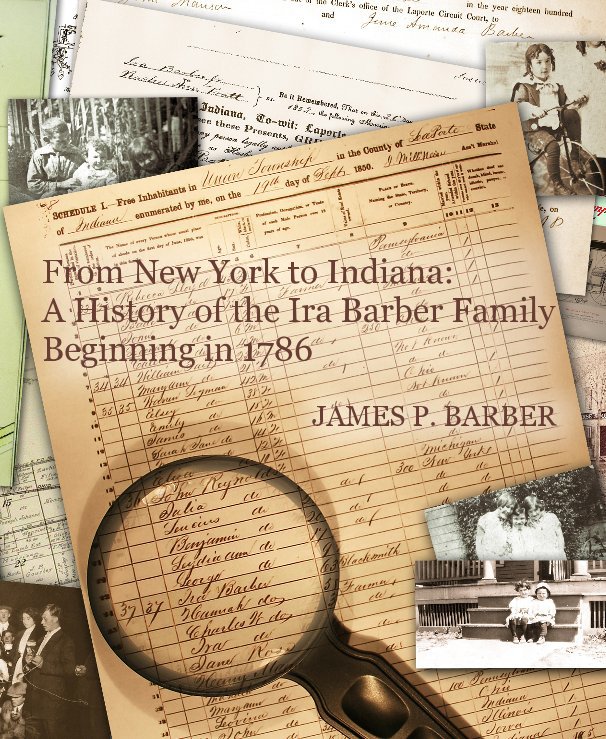From New York to Indiana
A History of the Ira Barber Family Beginning in 1786
de James P. Barber
Voici le prix vu par vos clients. Éditer la liste des prix
À propos du livre
This line of the Barber family begins with the birth of Ira Barber in 1786, just about the time of the birth of our country with the United States Constitution setting us on a critical path in our world’s history. It is obvious that this time of our history influenced the direction of the lives of many Americans for the next couple of centuries, and certainly the core character of the Barber family was influenced by these developments.
We will see how Ira, a farmer and a blacksmith, charged headlong into the future when he moved his family into the country’s remote western reaches of Indiana in the late-1830s or early-1840s. He would have been in his fifties in age when he and his family made this move traveling on the Erie Canal and the Chicago Road to their destination in La Porte County, Indiana.
Through the first five generations of Ira Barber's descendants, you will see true-hearted families with a strong work ethic and accomplished skills and trades. You will view these early generations in the context of their times and places with insights into transportation, economic issues, monetary challenges and simple things like clothing the family. You will get a glimpse of working in the wagon and carriage making businesses and see how the Barbers continued to be hard-working, skilled, ethical and family oriented – attributes that today's descendants of Ira Barber share.
The text of the nearly 270-page book covers five generations of the Barber family beginning with Ira. But, I have included a complete descendant chart of all the relatives I have located which covers eight generations. You will be able to see 450 relatives in this 65-page chart. This includes an index of names and places for easy reference. The book also includes over 100 photographs, maps and illustrations.
Come along on the journey and see how history developed the character of the Barbers ... from New York to Indiana.
We will see how Ira, a farmer and a blacksmith, charged headlong into the future when he moved his family into the country’s remote western reaches of Indiana in the late-1830s or early-1840s. He would have been in his fifties in age when he and his family made this move traveling on the Erie Canal and the Chicago Road to their destination in La Porte County, Indiana.
Through the first five generations of Ira Barber's descendants, you will see true-hearted families with a strong work ethic and accomplished skills and trades. You will view these early generations in the context of their times and places with insights into transportation, economic issues, monetary challenges and simple things like clothing the family. You will get a glimpse of working in the wagon and carriage making businesses and see how the Barbers continued to be hard-working, skilled, ethical and family oriented – attributes that today's descendants of Ira Barber share.
The text of the nearly 270-page book covers five generations of the Barber family beginning with Ira. But, I have included a complete descendant chart of all the relatives I have located which covers eight generations. You will be able to see 450 relatives in this 65-page chart. This includes an index of names and places for easy reference. The book also includes over 100 photographs, maps and illustrations.
Come along on the journey and see how history developed the character of the Barbers ... from New York to Indiana.
Site Web de l'auteur
Caractéristiques et détails
- Catégorie principale: Histoire
- Catégories supplémentaires Histoire de famille/Arbre généalogique
-
Format choisi: Portrait standard, 20×25 cm
# de pages: 280 - Date de publication: nov 21, 2010
- Langue English
- Mots-clés La Porte, New York, Erie Canal, Barber, genealogy
Voir plus
À propos du créateur
Jim Barber
Warsaw, Indiana, USA
I believe strongly in the strength of family. Our individual personal history is the root of our world history. We need to understand from where we have come in order to know who we are ... we must remember.


